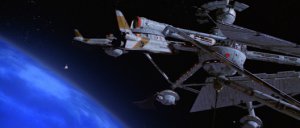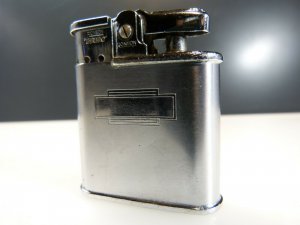An article by Tom Fordy in the Daily Telegraph declared the James Bond space-plotted movie Moonraker (1979) as the most influential of 007’s adventures, both to other movie makers (yes some scenes from it have been stolen by others), but also because its deranged principal bad guy Sir Hugo Drax, dryly played by Michael Lonsdale, is now a de facto reality with the likes of Elon Musk, Jeff Bezos, and even the UK’s own Sir Richard Branson all vying for the space villain title. Actually, they don’t actually aspire to this, but perhaps by default they have become it.
The film, of course, is nothing like the original Ian Fleming story. That had a much more believable plot, involving a nuclear tipped missile about to afflict London with total destruction, albeit that it needs a homing device to achieve its objective. The original novel also has a surprise ending, as to his chagrin (spoiler alert), our handsome hero James Bond does not “get the girl” this time as the wisely choosy Gala Brand has other romantic plans.
The movie version, of course has a bizarrely fantastical story involving stolen Space Shuttles, a massive space station, and a Nazi-style eugenics plan (basically anyone not young and beautiful gets it via re-entered Orchid-derived poison capsules). In the film’s plot, Hugo Drax turned out to be an evil menace whose plan to kill off most of ‘imperfect’ mankind with space-borne biological warfare became delayed by a fault to one of his own Moonraker spacecraft. To rectify this, Drax then set about pinching one of NASA’s orbiters by firing it off the back of its Boeing 747 transfer aircraft, at which point our super spy hero become involved, eventually to save the day. Plus for its love interest, instead of the feisty Miss Brand, it has brainy NASA astronaut-cum-CIA agent gratingly called Dr Holly Goodhead. Such puerile jokes, along with its outlandish plot, has caused many a film fan to regard Moonraker (1979) as one of the worst of the James Bond series.
Nevertheless, they are wrong. Actually, Moonraker (1979) has some very good bits in it.
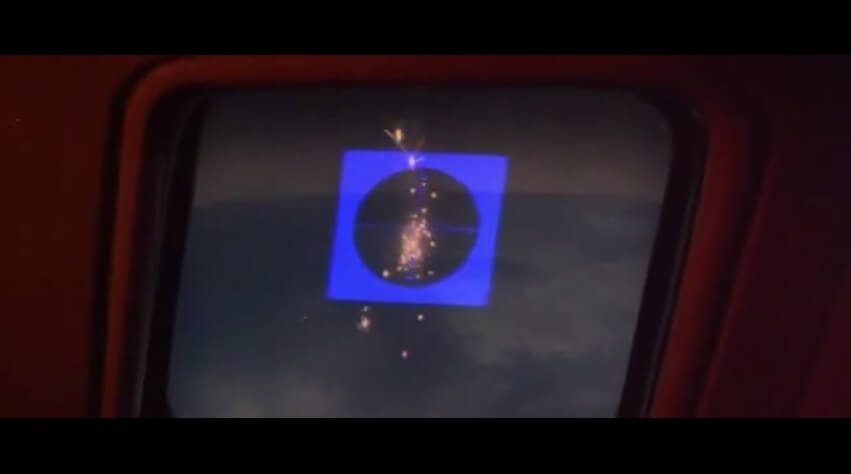
James Bond attempts a manual shoot down of a re-entering poison pod/capsule in Moonraker (1979). Courtesy: Eon Productions
The Space Shuttle laser cannon shoot down of the poisonous capsules which are about to re-enter from orbit is a very good scene for us space cadet aficionados. That, and the near demise of Her Majesty’s best secret agent either underneath an igniting rocket nozzle (one scene that does survive from the very different original book version) or overdoing it in the g-centrifuge machine (he gets out of that one via his armour-piercing/poison dart firing wrist band). Of course, like James Bond’s earlier volcano-based launch site adventure, You Only Live Twice (1967), it has some similar logistics stupidity on display. The idea of anyone able to secretly build a launch site in the middle of the Amazon jungle is, of course, incredible, let alone managing to launch an undetected major space station into orbit (even that moving bright star of the International Space Station can still be seen with the naked eye).
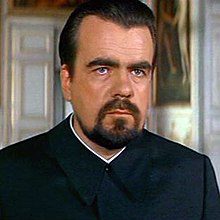
Michael Lonsdale as the space obsessed bond villain Hugo Drax. Courtesy: Eon Productions via Wikipedia
But we will put that aside for a moment. Actually Moonraker (1979) is a rollicking good adventure, and one that includes the return of the giant steel toothed Bond crusher Jaws, who is keen to finish what he had started in The Spy Who Loved Me (1977). That predecessor film was, of course, Roger Moore’s best gig in the Bond role, but even though only a few years later, by Moonraker (1979) the fifty-year-old Roger was looking just a tad long in the tooth (he subsequently soldiered on to film three more Bond films).
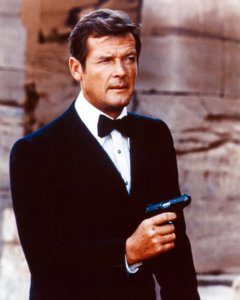
Dressed for the part: Roger Moore gets his Walther PPK out in The Space who loved me (1976). Courtesy: Eon Productions
So is Moonraker (1979) as influential as they say? Well maybe, to some film makers or to space megalomaniacs, but perhaps the book version is more so to some would-be secret agent heroes out there…albeit in other ways.
For those who aspire to being James Bond – or at least having some of his kit, there are problems. For example, carrying around 007’s Walther PPK pistol or his dart firing wrist band is likely to get you into serious trouble – probably with the shoot-first-ask-questions-later police. Likewise, wearing Bond’s famous (and expensive) Rolex Submariner watch – or his latterly product-placed Omega – risks getting you mugged.
Meanwhile, other bits of Bond’s equipment have since become too obsolete to carry around. These include his Minox spy camera, as seen in On Her Majesty’s Secret Service (1969), which has now been usurped by modern camera phone technology.
Nevertheless, there is one piece of 007’s standard carry which is both useful, and still very affordable: his lighter. Bond uses expensive Dunhill butane gas-powered ones in the movies, but employs lower-end good old petrol-fueled Ronsons in the books – either with a wartime military style battered black oxidised finish in the early adventures, including Moonraker, or a gunmetal-coloured one as mentioned in The Spy Who Loved Me.
Thus, despite being a non-smoker, this would-be super-spy has bought himself a rugged 1940s Ronson Whirlwind, just to have the right kit in the field you understand.
No – it can’t fire any bullets or darts, nor does it have a secret camera, but it does have a pull out wind guard. And very nice it is too.
So while his trusty Ronson not quite a deadly firearm, it is still a fire starter. As such, with it your agent Double O one-and-a-half correspondent may yet save the day – well, if ever a rocket – or more likely a barbecue – needs igniting that is.
More info on James Bond’s Ronson lighters is here: The James Bond lighter (thejamesbonddossier.com)

